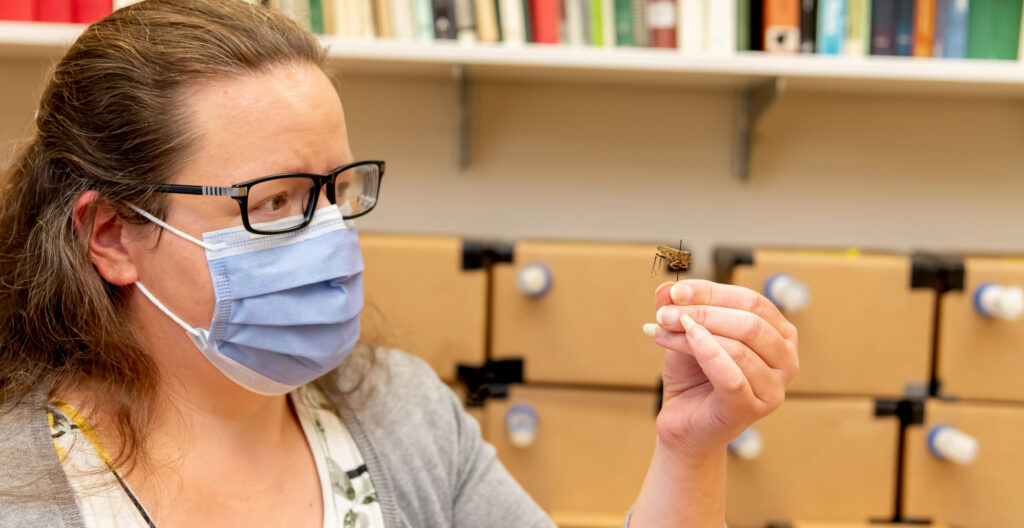Since the mid-1990s, the Prairie Pest Monitoring Network (PPMN) has developed protocols and conducted insect population monitoring for field crop pests in Alberta, Saskatchewan, Manitoba and the Peace River region of British Columbia.
The Saskatchewan Canola Development Commission (SaskCanola) currently co-funds the PPMN with Agriculture and Agri-Food Canada (AAFC) and other commodity organizations in the Prairie provinces as part of the Western Grains Research Foundation-led Integrated Crop Agronomy Cluster.
SaskCanola was established in 1991 as a grower-led organization to develop the canola industry in the province. SaskCanola collects a levy from registered Saskatchewan canola growers to fund research and extension initiatives, advocate for favourable policy at both the provincial and national levels, and develop market opportunities.
The PPMN provides its subscribers with free weekly updates by email during the growing season (including an all-important weather synopsis). In this way, timely data gets to stakeholders when insect pests pose the biggest threat to crop yield. Non-subscribers can find the same information online at prairiepest.ca.
Entomologist Dr. Meghan Vankosky is co-lead of the PPMN with Jennifer Otani and she is based in Saskatoon. Otani works out of the AAFC Beaverlodge Research Farm in northern Alberta.
Users of the pest monitoring information and risk maps include farmers, agronomists, industry members and policymakers. “Our audience is every stakeholder in the agricultural value chain and goes way beyond other entomologists and academics,” says Vankosky.
In terms of canola crop pests, the PPMN focuses on monitoring cabbage seedpod weevil (an invasive species), diamondback moth, Bertha armyworm and grasshoppers. Diamondback moth are notable for their pesticide-resistance and migratory patterns.
The pluses of a collaborative monitoring program for farmers, agronomists and others involved in pest management include detecting invasive insects that may become a problem and providing other resources. This includes scouting protocols that farmers can use to make pest management decisions.
Overall, the PPMN emphasizes the importance of data collection and monitoring to understand trends that will help direct future research, as well as ensuring farmers are able to manage those trends in their fields.
The PPMN collects annual data and compiles it into distribution maps, and in some cases, forecast maps for the next growing season. Maps are available for canola pests including Bertha armyworm, cabbage seedpod weevil, diamondback moth and grasshoppers. Scouting guides and monitoring protocols are also available for these insects.
Established monitoring protocols include pheromone traps (a type of insect trap that uses pheromones to lure specific species of insects) for Bertha armyworm and diamondback moth. “We count on volunteers to host the pheromone traps and report weekly trap catch. Volunteers get real-time information about risk in their fields and provide data that contributes to maps communicating regional risk for the benefit of their neighbours. Volunteers help us to provide timely identification of emerging insect threats across the Prairies,” says Vankosky.
The PPMN provides all necessary supplies at no cost to volunteers. All pest monitoring activities are conducted following provincial biosecurity guidelines.
The PPMN relies on volunteers to grant access to private property for insect sampling. In Saskatchewan, landowners can visit the Saskatchewan Ministry of Agriculture website to sign up to participate in insect, weed and plant pathogen monitoring. More information can be found under Pest Monitoring at www.saskatchewan.ca.
Another aim of the PPMN is to highlight the importance of natural enemies of crop pests. Concludes Vankosky, “the PPMN is highly collaborative on the federal, provincial and academic levels. We hope the information that we provide helps growers make the best possible decisions for their crops. It’s a bit of a cliché, but knowledge is power for making in-season and between season decisions.”
To find out more about the PPMN, and become a subscriber, go to prairiepest.ca. To learn more about SaskCanola, go to saskcanola.com.
Thank you to SaskCanola for submitting this article and photo.
Photo: Entomologist Meghan Vankosky, co-lead of the Prairie Pest Monitoring Network, says farmer volunteers are key to the program.
Photo credit: D&M Images for SaskCanola
